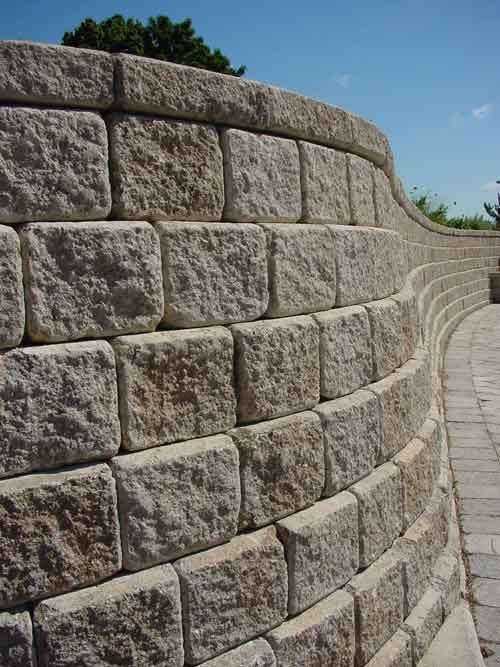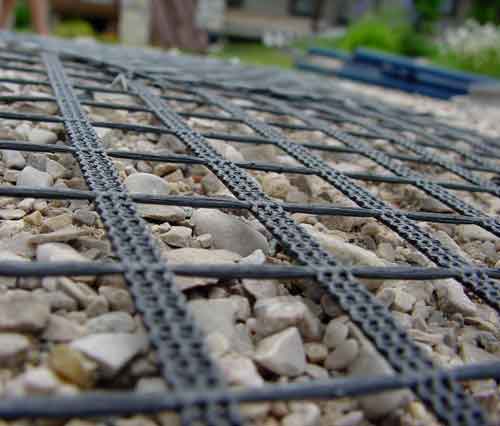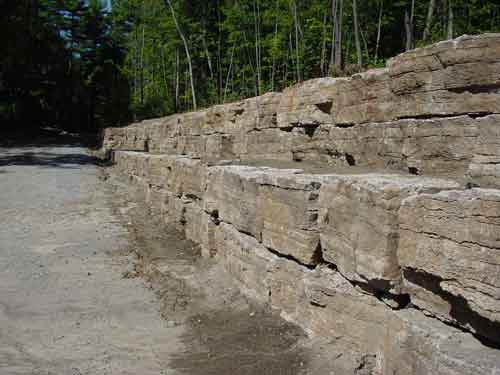 Many of life’s problems can be solved, but others stubbornly and absolutely resist any kind of after-the-fact fix. Failed retaining walls are of the latter, a fact I’m reminded of from time to time by readers looking for help. Feeling like a doctor delivering news of a terminal illness, I explain that the only thing that would have made a difference needed to have happened long ago, when the retaining wall first went up.
Many of life’s problems can be solved, but others stubbornly and absolutely resist any kind of after-the-fact fix. Failed retaining walls are of the latter, a fact I’m reminded of from time to time by readers looking for help. Feeling like a doctor delivering news of a terminal illness, I explain that the only thing that would have made a difference needed to have happened long ago, when the retaining wall first went up.
Three simple and often-overlooked retaining wall details make all the difference.
The main thing to understand is that holding back a wall of soil is more physically challenging than it appears. That’s because elevated soil is always exerting pressure against retaining walls – lots of constant pressure. In most parts of Canada it’s even worse because cold wintertime temperatures cause wet soil to freeze and expand, exerting even more pressure against any wall that has the audacity to try and contain it. Bulky timbers or hulking slabs of precast concrete may look sturdy enough to do the job, but they probably can’t hang on long-term without help.
- Primary Precaution: Prevent Freeze Expansion: Preventing expansion of frozen soil is the first, and often-overlooked detail, and fast and easy drainage of rainwater is key to making this happen. Installing drainage tile behind the wall, and drainage holes through the wall, is important, but this won’t be enough unless the soil behind the wall is sandy enough to let water percolate through. Never allow heavy, clay-type soils to be used as backfill behind your new retaining wall, no matter how convenient or economical it might be. Heavy soils retain water and this makes them expand like crazy every time they freeze. It’s a sure way to sow the seeds of disaster.
- Anchors Away: Physical anchoring of the wall is another engineering detail you need to know about. Even bulky retaining wall materials aren’t necessarily strong enough to resist constant soil pressure on their own. Physically anchoring the face of the wall back into the soil mass with cables fastened to earth anchors is one
 way to boost strength. Earth anchors are like big corkscrews that you twist into undisturbed soil. Run a galvanized cable through the loop on top of the anchor and tie it back into the soil-side face of the wall. Some engineered retaining wall systems are made to operate without tie-backs, though most walls benefit from them.
way to boost strength. Earth anchors are like big corkscrews that you twist into undisturbed soil. Run a galvanized cable through the loop on top of the anchor and tie it back into the soil-side face of the wall. Some engineered retaining wall systems are made to operate without tie-backs, though most walls benefit from them. - Getting a Geogrid: Geogrid is the third, the least well known, and possibly the most effective thing you can install to ensure an eternal retaining wall. It’s a coarse, synthetic mesh that boosts the tensile strength of soil – making it much less likely to “flow” downhill and exert pressure on your retaining wall. No pressure means no collapse. Ever. Geogrid is rolled out in layers every 30cm to 45cm vertically as the soil behind the retaining wall is dumped in and compacted behind the structure. It’s so effective at holding soil together that I’ve even seen geogrid used alone to hold 20-foot high sheer faces of bare soil stable, with only a creeping mat of ivy consolidating the surface. No retaining wall was present at all.

You’ll probably have to speak up to your contractor to get drainage, mechanical reinforcement and geogrid features built into your new retaining wall. These details aren’t installed as often as they should be. That said, a little assertiveness up front is way better than a collapsed retaining wall, a big bill and the regret of knowing that it didn’t have to be this way.
 way to boost strength. Earth anchors are like big corkscrews that you twist into undisturbed soil. Run a galvanized cable through the loop on top of the anchor and tie it back into the soil-side face of the wall. Some engineered retaining wall systems are made to operate without tie-backs, though most walls benefit from them.
way to boost strength. Earth anchors are like big corkscrews that you twist into undisturbed soil. Run a galvanized cable through the loop on top of the anchor and tie it back into the soil-side face of the wall. Some engineered retaining wall systems are made to operate without tie-backs, though most walls benefit from them.



